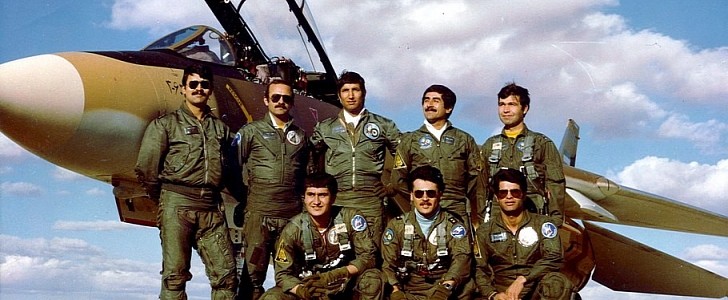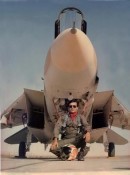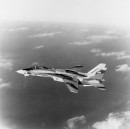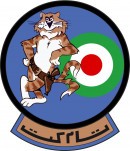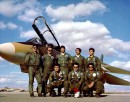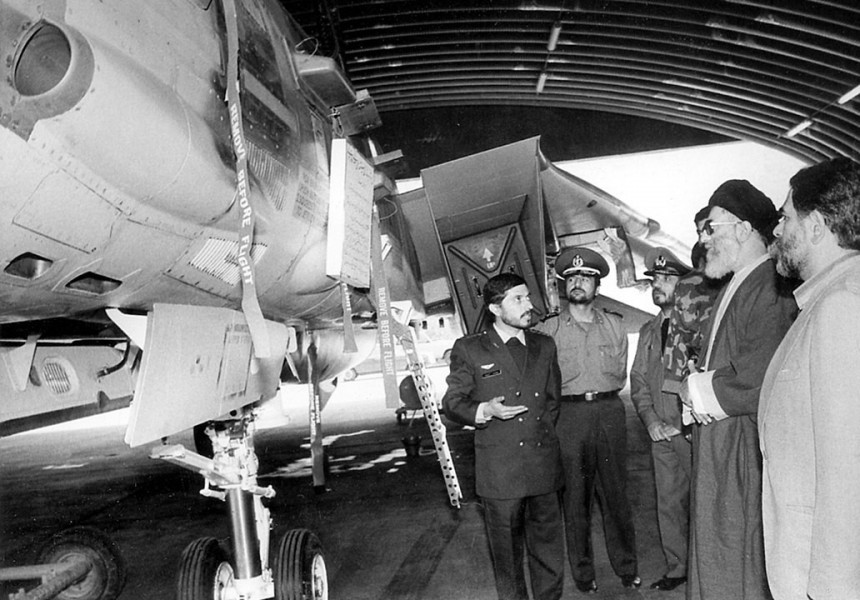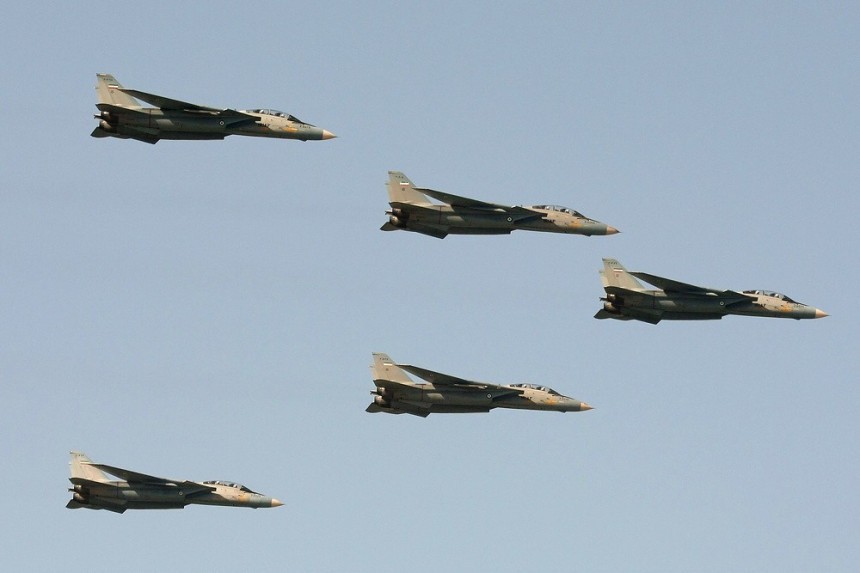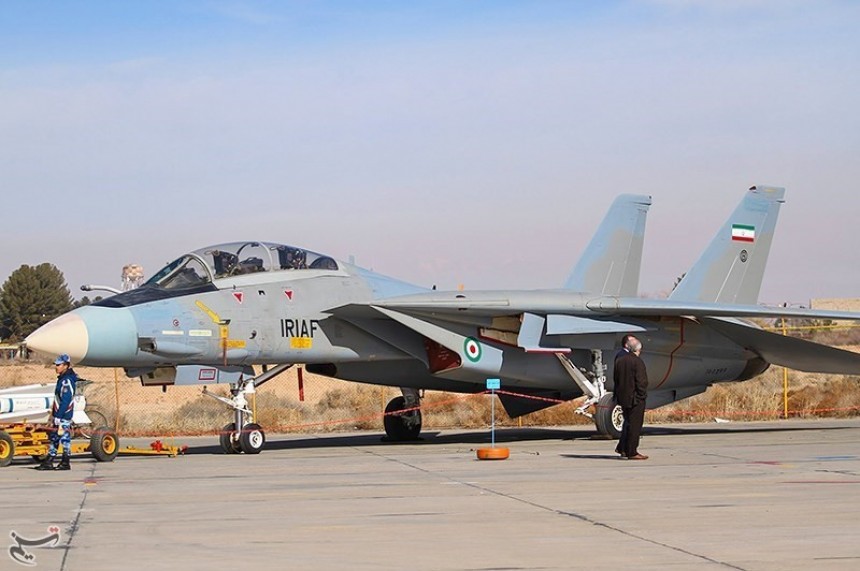Iran might be on the precipice of a profound change. Recent protests in response to suspicious deaths of Iranian women in police custody have left the country's leadership in disarray. The country seems to be in a similar state to the one from back when the Islamic Republic has seen itself engulfed in revolution of 1979.
Most of the time, geopolitics are seldom newsworthy for our purposes here. But in this case, the Iranian government's turmoil might one day reveal secrets about one of Iran's prized warplanes. As it happens, they're American in origin.
If you know anything about the current Iranian regime, you'll understand the irony of it all. Iranian pilots love them, and the U.S. Navy laments that the Iranians ever got their hands on them. But if the regime does fall, western eyes may finally see the more intricate details of the Iranian Air Force's Grumman F-14 Tomcats.
In the days before the Ayatollah, during the reign of Mohammad Reza Pahlavi, the last Iranian Shah, Iran was the sole export customer of the F-14. What was, at the time, the most advanced carrier-borne jet fighter in the history of aviation.
At the time, the U.S. had the luxury of being in the good graces of the Israeli and Iranian governments. Something that sounds absurd with modern sensibilities. As such, both nations were allowed to pick which American jet fighter they wanted to order for their own Air Forces.
The Israelis opted for the McDonnell Douglas F-15 Eagle, which they used to great effect in every war they fought for the rest of the 20th century. Meanwhile, Iran was already taking delivery of the equally American McDonnell Douglas F-4 Phantom II and became the first in line to order the F-14. The first Iranian F-14 Tomcat left the Grumman factory in the Long Island, New York neighborhood of Bethpage, bound for Iran, in December 1975.
The Tomcats arrived in Iran in January of the following year with 79 delivered in total. From the accounts, as told by Iranian pilots themselves, a great many thought it was the greatest airplane they'd ever flown. The F-14's combat record post-Iranian Revolution is hard to quantify definitively. But it's safe to say the Iraqi Army grew to loathe the thing. Be it MiG-21s, MiG-23s, Su-20s, and 22s, no Iraqi jet was safe during the Iran-Iraq war of the 1980s.
Rivaled in dominance only by their once allies turned enemies, the Israelis and their F-15s against Lebanon and Syria, The Tomcat proceeded to buzzsaw through its adversaries with the same ease. By 2002, Iranian F-14s were still toying around with its adversary's inferior airplanes.
Most famously, in July of that year, Iranian Tomcats intercepted two Azerbaijani MiG-25 Foxbats and achieved missile lock without the MiGs ever being any the wiser. They were escorting Russian bombers over Syrian airspace as late as 2015.
But interestingly enough, Iranian Tomcats were delivered all those years ago with most of the US-Navy spec, highly-classified avionics components removed. Therefore, the avionics and engine package Iran's Tomcats have been using post-Revolution remains a debated topic in military intelligence circles. Iranian F-14 pilots have defected to both the Soviet Union and Iraq, so the chances of an avionics package that's Soviet or Russian in origin isn't out of the question. It could also be in-house designed in origin.
What is better known is the U.S.'s frigid and lifeless relationship with the current Islamic State government of Iran was a key factor in the F-14D's retirement from U.S. Navy service in 2006. Grumman Aerospace had devised an upgrade path for the Tomcat platform before its merger into Northrop Grumman in 1994.
But one can't help but think the chances of that technology falling into the hands of a nation openly hostile to American interests was a factor in the Super Tomcat 21 never coming to fruition. Should the near 45-year-long reign of the Islamic State end via another revolution at the hands of largely pro-western Iranian Millenials and Gen-Z, the secrets of the Iranian Tomcats being uncovered could create a shock wave throughout global military aerospace. Whether for legitimate intel purposes on the part of the Pentagon, or as a mere morbid curiosity, it should be evident why this happening could be a huge deal.
If you know anything about the current Iranian regime, you'll understand the irony of it all. Iranian pilots love them, and the U.S. Navy laments that the Iranians ever got their hands on them. But if the regime does fall, western eyes may finally see the more intricate details of the Iranian Air Force's Grumman F-14 Tomcats.
In the days before the Ayatollah, during the reign of Mohammad Reza Pahlavi, the last Iranian Shah, Iran was the sole export customer of the F-14. What was, at the time, the most advanced carrier-borne jet fighter in the history of aviation.
At the time, the U.S. had the luxury of being in the good graces of the Israeli and Iranian governments. Something that sounds absurd with modern sensibilities. As such, both nations were allowed to pick which American jet fighter they wanted to order for their own Air Forces.
The Tomcats arrived in Iran in January of the following year with 79 delivered in total. From the accounts, as told by Iranian pilots themselves, a great many thought it was the greatest airplane they'd ever flown. The F-14's combat record post-Iranian Revolution is hard to quantify definitively. But it's safe to say the Iraqi Army grew to loathe the thing. Be it MiG-21s, MiG-23s, Su-20s, and 22s, no Iraqi jet was safe during the Iran-Iraq war of the 1980s.
Rivaled in dominance only by their once allies turned enemies, the Israelis and their F-15s against Lebanon and Syria, The Tomcat proceeded to buzzsaw through its adversaries with the same ease. By 2002, Iranian F-14s were still toying around with its adversary's inferior airplanes.
Most famously, in July of that year, Iranian Tomcats intercepted two Azerbaijani MiG-25 Foxbats and achieved missile lock without the MiGs ever being any the wiser. They were escorting Russian bombers over Syrian airspace as late as 2015.
What is better known is the U.S.'s frigid and lifeless relationship with the current Islamic State government of Iran was a key factor in the F-14D's retirement from U.S. Navy service in 2006. Grumman Aerospace had devised an upgrade path for the Tomcat platform before its merger into Northrop Grumman in 1994.
But one can't help but think the chances of that technology falling into the hands of a nation openly hostile to American interests was a factor in the Super Tomcat 21 never coming to fruition. Should the near 45-year-long reign of the Islamic State end via another revolution at the hands of largely pro-western Iranian Millenials and Gen-Z, the secrets of the Iranian Tomcats being uncovered could create a shock wave throughout global military aerospace. Whether for legitimate intel purposes on the part of the Pentagon, or as a mere morbid curiosity, it should be evident why this happening could be a huge deal.
If you're like the countless people who silently wept when the Tomcat left American service, you're no doubt fascinated with what it has rocking under the hood these days. It's bound to be some fascinating stuff. But if this does
happen, it would be a mere footnote in a landmark period in Iranian history. A period of profound change for so much more than curious aviation buffs, but for all the people of Iran.
Check back for more fighter jet profiles here on autoevolution.
happen, it would be a mere footnote in a landmark period in Iranian history. A period of profound change for so much more than curious aviation buffs, but for all the people of Iran.
Check back for more fighter jet profiles here on autoevolution.
